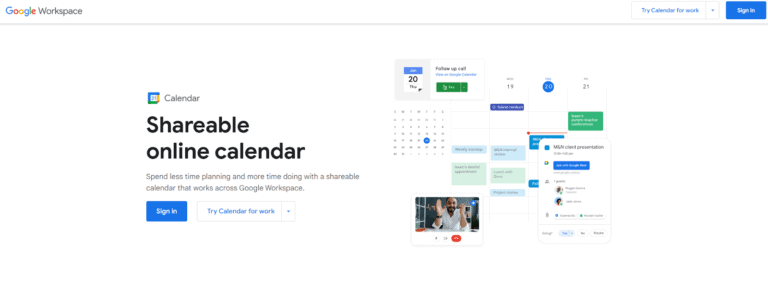Parkinson’s Law: Work Expands to Fill The Time Available
Whether you’ve started a new small business or are looking to optimize your career, managing your time effectively is crucial for success.
As entrepreneurs and high performers, we are all familiar with the endless to-do lists, deadlines, and never-ending tasks that come along with running our own business. When you are a “busy person,” it often feels like there just aren’t enough hours in the day to get everything done.
However, time is our most valuable personal resource. Once you lose time, it is gone forever. And we often find ourselves constantly striving for more time, more productivity, and more efficiency.
But what if I told you that there is a law of nature that governs how much work we can actually accomplish in a given amount of time?
This concept is known as Parkinson’s Law, and understanding it can revolutionize the way we approach our work. So, let’s take a closer look at Parkinson’s Law and how we can use it to our advantage!
What is Parkinson’s Law
In 1955, a British naval historian and author, Cyril Northcote Parkinson, opened an essay in The Economist with what would become his famous law:
Parkinson’s Law – “Work expands to fill the time available for its completion.”
Drawing from his observations of the British civil service, Parkinson illustrated how bureaucratic inefficiencies arise. In essence, the amount of time you allocate for an activity determines the level of effort you will exert to complete the task.
Therefore, giving more time will cause you to put in less effort, while allocating less time will prompt you to put in more effort. Parkinson’s insights reveal a fundamental aspect of human behavior: the tendency to adjust effort based on the time available, highlighting the importance of setting realistic deadlines to enhance productivity.
How Does Parkinson’s Law Work?
In his somewhat satirical and cynical essay, Cyril Parkinson illustrates his law through the story of an elderly woman who wanted to send a postcard to her niece. Typically, this task would take about five minutes.
However, the woman had not planned much for the rest of the day, and the task took all day. She needed to work on finding the card, looking for her glasses, writing the content, etc.
Parkinson wanted to demonstrate that the woman’s work expanded to fill the entire day available to complete the task, illustrating what has become known as Parkinson’s Law. This concept resonated with many people and led to the publication of several more articles and even a book by Parkinson, titled “Parkinson’s Law: The Pursuit of Progress.”
Why Should You Apply Parkinson’s Law to Your Work?
Parkinson’s Law has had a significant impact due to its universality, being relatable and applicable to anyone’s work or life.
When you impose a deadline for a particular task, the amount of time spent completing this task correlates with the length of the deadline. For example, your job assigns an employee to write and deliver a report within two weeks. Hypothetically, this task should take a week. However, because of the deadline, the employee will probably use the entire two weeks to finish this task. If the deadline were a month or more, the employee would still probably take the corresponding amount of time to write the report.
This demonstrates how the task expands to fill the time available for its completion. For this reason, Parkinson’s Law is an intriguing glimpse into the complexities of human psychology. It highlights how unnecessary time can be wasted if realistic deadlines are not set.
To combat this, break tasks into smaller chunks. For instance, instead of dedicating a whole day to a large project, split it into smaller, manageable parts, such as working on it for half an hour at a time. This approach not only improves personal productivity but also helps you stay focused.
In real life, many small tasks can be streamlined by setting shorter deadlines. Writing a blog post might seem like it requires more than a few hours, but by allocating half an hour for each section, you can complete it efficiently.
Ultimately, understanding and applying Parkinson’s Law can greatly enhance your productivity by reducing time spent on tasks and ensuring that there’s no wasted time.
How to Apply Parkinson’s Law?
Now that you understand how Parkinson’s Law works, you can implement it to unleash your productivity. When deciding how to implement this law, start from a high-level perspective for your life or business vision before narrowing down to the details to execute.
Then, you should take the following steps to implement Parkinson’s Law in your work:
#1) Identify the Activity
You should determine the specific task or project you would like to accomplish based on your most important priorities. In addition, you should assess your reasons for wanting to achieve this activity before applying Parkinson’s Law.
#2) Decide on the Deliverables
Define the specific objectives or expectations for your particular task or project. These deliverables should be specific and measurable for the amount of work needed to accomplish the activity. Lastly, try to avoid scope creep or your deliverables becoming more extensive than you initially anticipated, as this will increase the time and effort required for completion.
#3) Identify Your Constraints
Determine all the limitations or obstacles for this specific task or project. For example, there may be a provided deadline from a manager, collaborator, or client. Also, there may be touchpoints with other stakeholders or collaborators necessary to accomplish this activity.
#4) Envision Potential Timelines
Assess the potential worst, average, and best-case scenarios for the timeline for finishing the task or project. Remember, Parkinson’s Law states that the amount of time you allocate for an activity will determine the level of effort to complete the job. And so, the best-case scenario requires the highest level of effort to get the fastest estimated time to complete the activity.
#5) Think Innovatively about Your Best Case
Imagine finishing your task or project on a very aggressive timescale for your best-case scenario. What creative strategies or techniques could you employ to get more work done in less time? For extra help in time management, you can use the five discovery skills from The Innovator’s DNA (book summary): associating, questioning, observing, networking, and experimenting.
#6) Create Self-Imposed Deadlines
Using Parkinson’s Law, establish a deadline to complete your task or project closer to your best-case scenario. Your deadline should feel like an uncomfortable stretch but not unrealistic or unreasonable. Remember the resources required and other choices or tradeoffs necessary to accomplish the task or project by the deadline.
#7) State the Activity as a SMART Goal
SMART Goals are Specific, Meaningful, Achievable, Relevant, and Trackable. State your activity or task in a way that meets all of these criteria:
- Specific – “help you know exactly what you need to do to move forward with the idea”
- Meaningful – provides you with a quick understanding of “the importance of completing that goal”
- Actionable – tells you “what action needs to be taken to accomplish that goal”
- Realistic – shows you that “the endpoint is achievable with the resources you have available”
- Trackable – tells you clearly “what progress means,” qualitatively or quantitatively, specifically with a deadline
Now that you have implemented Parkinson’s Law to reduce your timeline to complete your task or project, go off and execute.
After completing your activity, review your execution and identify areas for improvement. This after-action review will help you better employ Parkinson’s Law in future tasks or projects.
What Do You Do with the Extra Time?
Understanding Parkinson’s Law is crucial for continuous improvement. It helps you become more effective and reach your goals faster. Over time, the benefits of applying this law accumulate and compound, saving you more time. By shifting your mindset and compressing your timelines, you will have extra time left over.
For example, you may find yourself wasting time by spending two hours reading and replying to emails throughout the day. To overcome Parkinson’s Law, you should compress your email task within a batched ninety minutes, then one hour, and perhaps even 45 minutes.
Initially, managing your emails in an hour might sound impossible. Still, as you gradually shorten the time allotted, you will discover it is possible and easier than expected.
By reducing the email task to half, you gain at least an hour back. So, how should you spend that extra time?
What you do with this saved time is entirely up to you, and taking control of your day in this way is incredibly empowering. You can allocate this extra time to add more professional tasks or projects, helping you achieve your business vision, or enjoy it personally by indulging in hobbies, fun activities, or learning something new.
Incorporating Parkinson’s Law into your routine ensures that you do not waste time and instead create a healthier work-life balance.
Parkinson’s Law in Action: The 12-Week Year
A great example of how to combat Parkinson’s Law is illustrated in Brian Moran’s book, The 12 Week Year. Many people and organizations define their goals based on an annual timeline, believing they have ample time to achieve results. This often leads to procrastination and undue time spent on so-called urgent tasks. However, Moran redefines the year into a 12-week framework, which shifts the mindset to one of urgency, clarity, and focus.
Moran argues that you should discard annualized thinking and establish goals on shorter time frames, precisely 12 weeks. This approach “keeps you from getting ahead of yourself and ensures that each week counts.” By doing so, you can take immediate action and create breakthrough results. Every three months, you can review your progress and start fresh.
When setting goals, evaluate each one and ask yourself if it is possible to compress your timelines for completion to 12 weeks. If yes, do it, and observe how you exert more effort and accomplish more in 12 weeks than you would in an entire year. This method of setting manageable steps and deadlines enhances your focus and productivity.
For example, instead of treating a larger project as a year-long endeavor, break it down into smaller tasks that can be tackled within half-hour segments. This not only makes the project more manageable but also allows you to see progress regularly. As the deadline approaches, you’ll be more motivated to complete each segment efficiently.
Implementing these time estimates and setting shorter deadlines can significantly increase productivity. This strategy helps avoid the trap of thinking there is ample time to complete tasks, ensuring that each day is productive and goal-oriented.
Final Thoughts on Implementing Parkinson’s Law
In this post, we have explored the fascinating concept of Parkinson’s Law—the idea that work expands to fill the available time. We’ve delved into its origins and how it applies to our daily lives, from personal tasks to workplace productivity.
But beyond just understanding this theory, let’s take a step back and reflect on how we can use it to our advantage. Instead of letting time control us, we should take control of our time by setting clear and achievable goals, prioritizing tasks, and avoiding procrastination. One way to do this is to set deadlines that challenge us to complete tasks more efficiently.
As author Cyril Northcote Parkinson himself said, “the perfect bureaucracy is one that is in a state of constant growth!” So, let’s break free from these bureaucratic tendencies and challenge ourselves to be more efficient with our time. People tend to spend too much time on trivial matters, losing sight of the bigger picture. By consciously deciding how much time to allocate to tasks, we can avoid this pitfall.
For instance, when tackling a big project, break it down into smaller, manageable tasks and set shorter deadlines for each one. This prevents the project from taking all the time available and keeps us focused on progress. By not allowing tasks to take too much time, we can maintain a steady pace and avoid unnecessary delays.
Remember, quality over quantity should always be our mantra. Implementing Parkinson’s Law can help us be more effective, freeing up time for neglected hobbies or much-needed self-care routines. By focusing on efficiency, we can reclaim time otherwise lost to inefficiencies.
So go forth and conquer your tasks with the magic of Parkinson’s Law, ensuring that every moment is used wisely and effectively!







